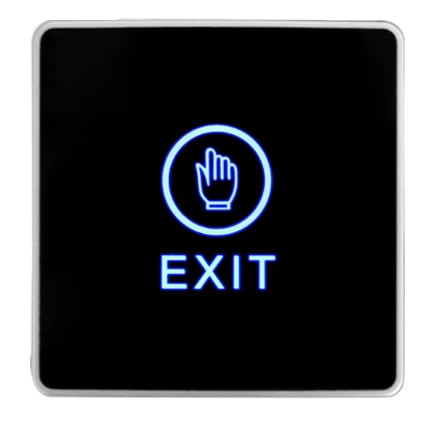In this lesson, we will identify the most common outages you may encounter, how to identify the type of the outage, what may have contributed to or caused the outage, and how the outage will impact administrators and end users. Additionally, this lesson will explore common emergencies and how your system will respond.
Topic 1: Outages
Outages refer to a point of failure in the systems that support your access control solution. An outage can be widespread, impacting all users in an organization, or it could be narrow, affecting a single access point.
Overview of the 5 most common outages and their impact on your access control solution:
Cloud Service Outage
Cloud outages can occur for various reasons, like natural disasters, cyberattacks (including DDoS, hacking, viruses, etc.), human error, poor architecture design, application defects, hardware failure, network outages, and power outages. Even the most dependable cloud service providers can experience an outage.
To determine if you are experiencing a cloud outage, first check the status of Kisi. The Kisi status page will provide detailed information about the outage and updates until we restore the cloud service. If Kisi is not indicating an outage, try accessing the web dashboard using mobile data from a mobile device.
Cloud outages will mostly impact administrators as they will not have access to the web dashboard until the outage is resolved. A cloud outage could potentially impact integrations. With Kisi readers, you can rely upon the local cache for access and egress.
Internet Outage
Internet outages are common and can be extremely frustrating. Internet outages can occur as a result of natural disasters, cut lines, network congestion, and hardware malfunctions, to name a few causes.
There are several ways to determine if you are experiencing an internet outage. Checking your provider’s social media pages, official websites, or sources like DownDetector can provide insights into a potential internet outage. If you want to take a more hands-on approach, follow the steps outlined in this video to check the status of your internet.
Kisi provides offline functionality as a way to unlock doors using cellular data even when Kisi devices are offline. Kisi’s Reader Pro 2 leverages edge caching as another step towards connecting people and spaces, allowing you to use Kisi with both cards and phones during complete internet outages. An internet outage will impact users who have not had their credentials cached.
Local Area Network Outage
Local Area Network outages share many similarities to internet outages and often happen for similar reasons. Some of the most common causes of a LAN outage are misconfigured network, hardware failure, human error, natural disasters, and cyber attacks.
If you’ve ruled out natural disasters and ISP outages, the next best step is to ensure all devices on the LAN are properly connected to power and network cables are free of defects (pinched or damaged cables can impact connectivity). Once confirmed, you can begin troubleshooting the LAN outage.
Access to Kisi during a LAN outage will likely require a fallback option in place. LAN outages are likely to prevent any unlocks, as the reader will be unable to communicate with the controller. In the event of a LAN outage, it is wise to have a fallback option such as a keypad, physical key, or lock power override in place.
Power Outage

Power outages can cause major disruptions to all aspects of your business. They can also leave the space vulnerable to safety and security risks. While some power outages are within your control (stemming from something minor like a tripped circuit breaker), most power outages are the result of some external force on the power grid (storm, downed trees, earthquakes, digging, high power demand, etc.) and will likely require intervention from the local utility.
If you determined a tripped circuit breaker didn’t cause the outage, it is best to immediately report the issue to your local utility. They can record the location and send technicians to diagnose the nature of the outage.
When power is removed from your access control system, the locks in your building will either operate as fail safe or fail secure. Unless your building or office employs backup generators or an Uninterruptible Power Supply (UPS), all users of the space will feel the impact.
Electrical Issue
Electrical issues are tied to the electric strike or magnetic lock installed on a door. The most common reasons for an electrical malfunction are inadequate power supply, low-quality or damaged cables, and equipment failure.
To determine the cause of an electrical issue, you may need to investigate. If the lock was previously working, start by checking if there is power to the lock. Next, examine the cables to ensure they are not damaged. If they are still able to carry power to the door lock, this is likely not the issue. Lastly, inspect the door for any defects. Ensure that the door has been hung properly and be sure to look for a twisted, bowed, or warped frame. Next, check to see if closers and hinges are worn, loose, or improperly aligned.
Electrical issues impact all users accessing that space. If your team is unable to resolve the problem in-house, it is important you coordinate with your installer to diagnose and repair the problem.
Topic 2: Emergencies
Understanding how your access control system operates during an emergency is not something you want to figure out when you’re in the midst of an emergency. It is important to understand the most common types of emergencies you may encounter so you can feel confident in any emergency.
Push to exit

Push to exit buttons allow users of a space a way to safely exit the space in the event the door doesn’t open with traditional handles. Push to exit buttons may refer to a literal push to exit button or to a motion sensor that unlocks a door from the inside allowing for safe exit. The button or motion sensor is installed inside of a room and wired to the electric lock on the door. Click here to learn more about push to exit buttons and how to troubleshoot failures.
Fire Alarm
Employing a high-quality fire alarm system can have a substantial impact on protecting lives and property. Often Fire Alarm Control Panels (FACP) are the responsibility of the building operator to install and maintain. If you are the building owner, you are responsible for ensuring that the FACP installed meets the local fire code. Click here to learn more about what to consider before purchasing a fire alarm system. Click here to learn more about how to integrate fire alarms with access control.
Burglary/Intrusion Detection

Unauthorized users in your space feels like an invasion of privacy and could pose a security or safety risk to your business and people. In addition to viewing alerts in Kisi’s web dashboard, administrators can create alerts policies and receive notifications for select events like a door being forced or held open. Click here to learn more about intrusion alarm systems.
Lockdown
In publicly accessible spaces, it is important to employ security procedures to secure your doors in the event of a security threat. Performing a lockdown will prevent users from entering and exiting the space until the threat has been contained.
With Kisi, admins can activate a lockdown for a specific door or for the entire facility with a single click. You can quickly manage lockdown in Kisi's web, iOS, and Android applications. Lockdown mode prevents unlock activities by overriding all access permissions. This means all user and group permissions and scheduled unlocks are all put on hold as long as the lockdown is active. Click here to learn more about lockdowns.
Conclusion
By understanding the points of failure in a system you are better prepared to take on most any outage that may come your way and develop a robust response plan. Likewise, learning how to leverage the features of your access control system will empower you to create emergency responses that put the safety and security of your users at the center.
An emergency response plan for access control could look like this:
Save time. Enhance security.
Modernize your access control with remote management and useful integrations.
Continue learning

